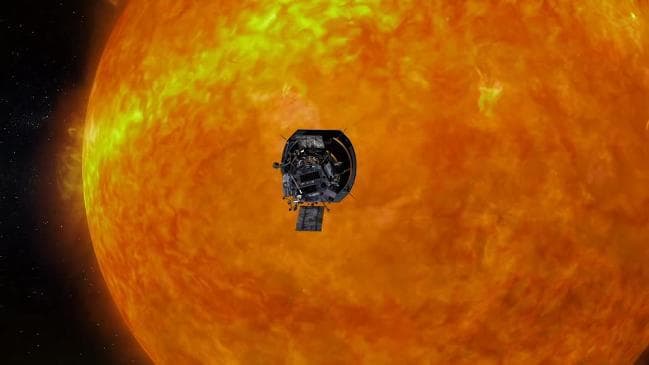NASA’s Parker Solar Probe has beaten a decades-old record for making the closet approach to the sun by of any man-made spacecraft.

The previous record for the closest solar approach was set by the German-American Helios 2 spacecraft in April 1976. On 29 October 2018, at exactly 1:04 pm EDT (17:04 GMT), Parker moved closer than 42.73 million kilometers (26.55 million miles) from the Sun’s surface.
Parker is set to break other records soon, such as the top heliocentric and geocentric speeds. In 1976, the same Helios 2 set the record for heliocentric speed (relative to the sun) at 246,960 kilometers per hour (153,454 miles per hour). Parker is expected to beat this record on 29 October at about 10:54 pm EDT.
What’s more, the probe — tasked with studying the inner workings of the sun — is expected to reach a staggering top speed of 692,017 km/h (430,000 mph) during its final pass around the sun, shattering any previous record for geocentric speed (relative to Earth). It won’t be until 2025 until this happens, however.
“Parker Solar Probe has been one of our most challenging missions to date,” said Omar Baez, Nasa’a launch director, when the probe first launched in August 2018. “I’m very proud of the team that worked to make this happen. We at Nasa and the Launch Services Program are thrilled to be part of this mission.”
The influence of solar activity on Earth and other worlds is known as space weather, but there are many mysterious aspects of it that are still unknown to scientists. This is what Parker is for.
For its mission, Parker carries a range of instruments that can study the sun both remotely and in situ (directly) — the kind of observations that might unravel some of the sun’s most well-kept secrets.
Of course, NASA has several specific questions it wants Parker to answer. One of them has to do with the mystery of the acceleration of solar wind — the constant ejection of magnetized material from the sun. Somewhere, somehow, this solar wind is accelerated to supersonic speeds.
Parker will fly straight through the corona — the sun’s atmosphere that extends millions of kilometers into outer space. The corona is scorching hot, reaching temperatures in the range of millions of degrees Celsius. However, the sun’s surface has a temperature of only about 6,000 degrees Celsius. This makes no sense at first glance: how is it possible that the surface of the sun is so cold compared to its atmosphere? Well, scientists hope that Parker might come up with an answer to this counter-intuitive conundrum.
During its closest flyby, slated for June 2025, Parker will be only 6.1 million kilometers (3.8 million miles) from the sun’s surface, where temperatures can reach millions of degrees Celsius. Meanwhile, Parker will complete 24 perihelions, looping between Venus and the Sun.






